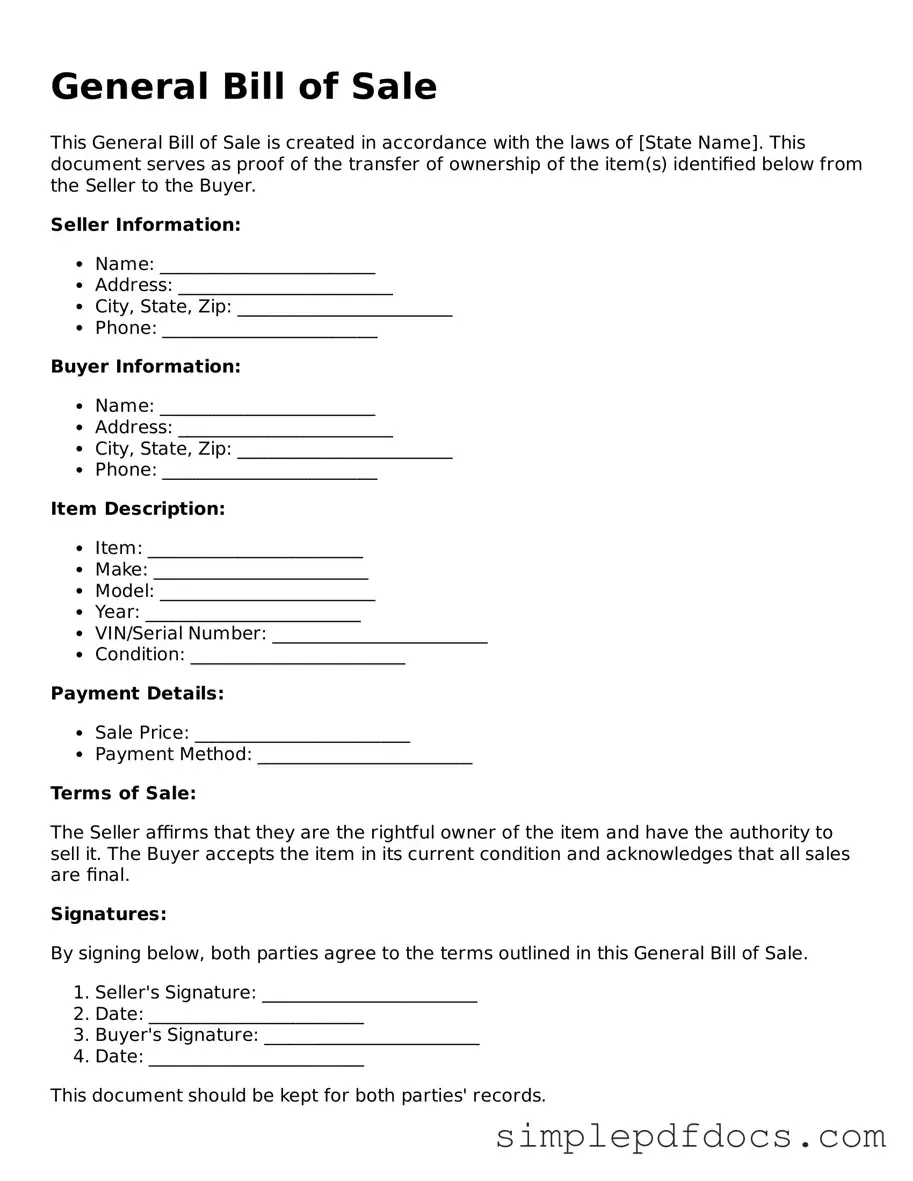A General Bill of Sale form is an essential document in the realm of personal property transactions. This form serves as a written record of the sale between a buyer and a seller, detailing crucial information such as the names of both parties, the date of the transaction, and a description of the item being sold. It often includes the sale price, ensuring clarity and mutual understanding. By providing a clear account of the transfer of ownership, the General Bill of Sale protects both parties involved. It can be used for a variety of items, from vehicles to furniture, making it a versatile tool in everyday transactions. Additionally, this form can help prevent disputes by establishing a legal framework for the sale, outlining any warranties or disclaimers, and confirming that the seller has the right to sell the item. Understanding the components and importance of this form can empower individuals to navigate their sales with confidence.
